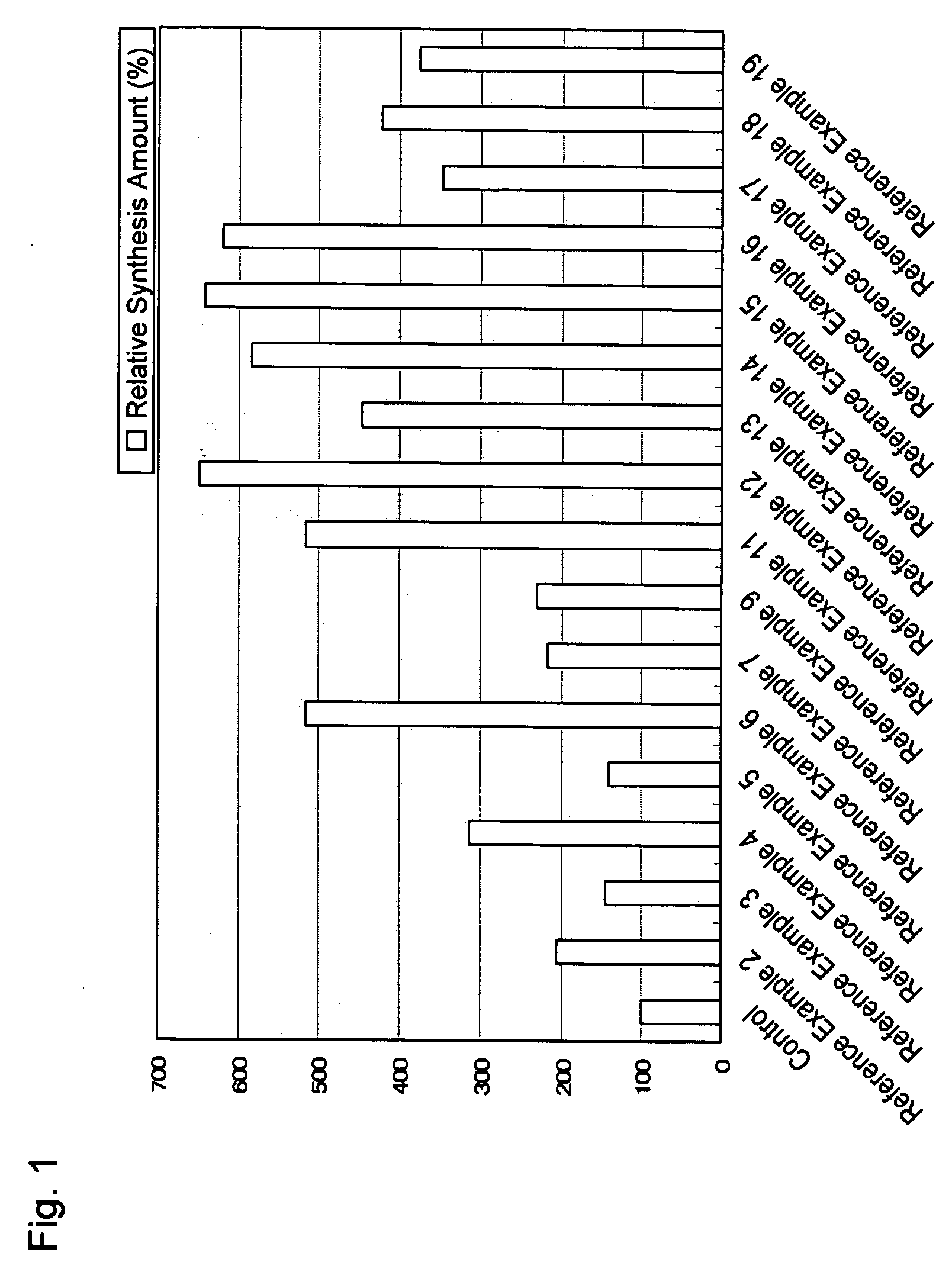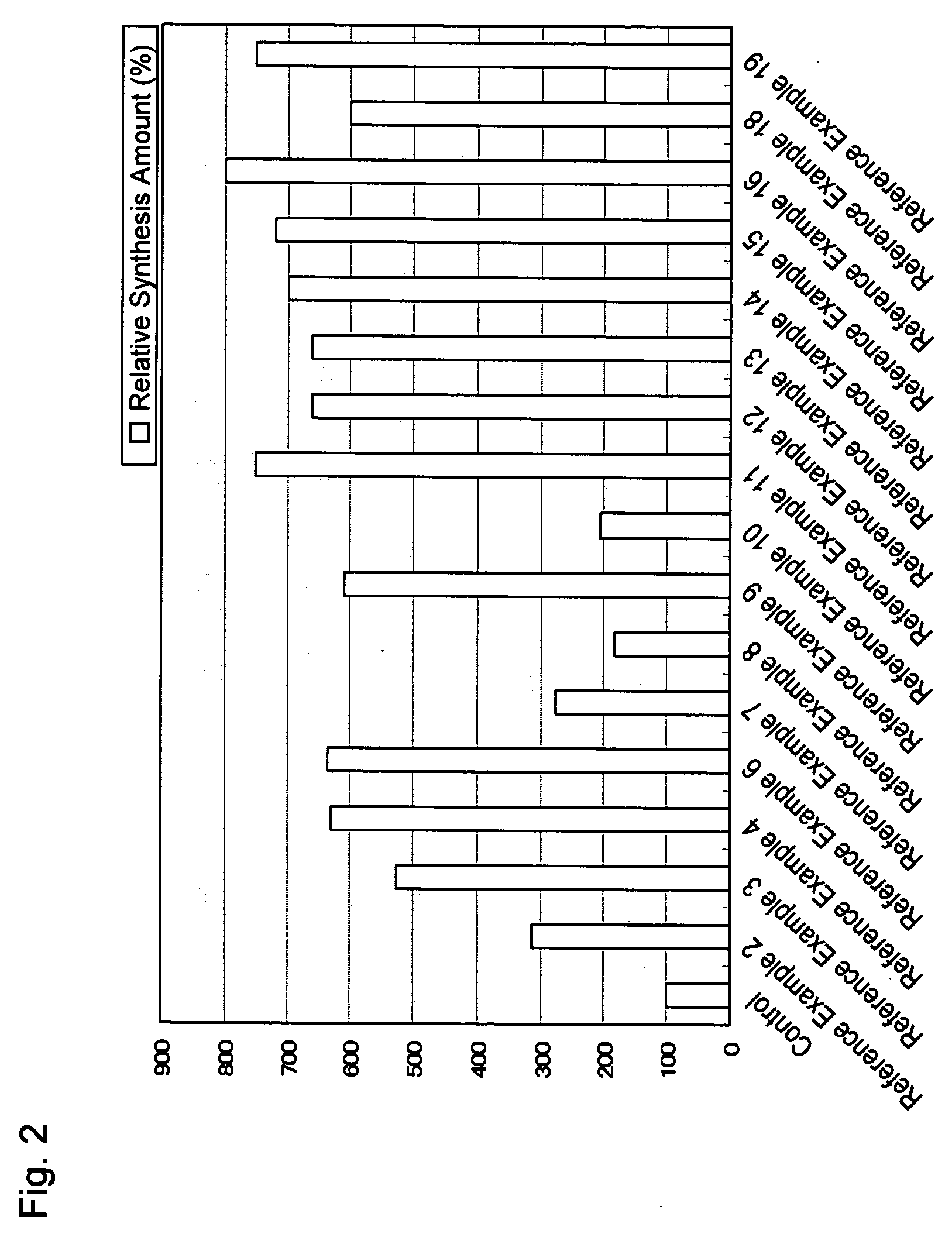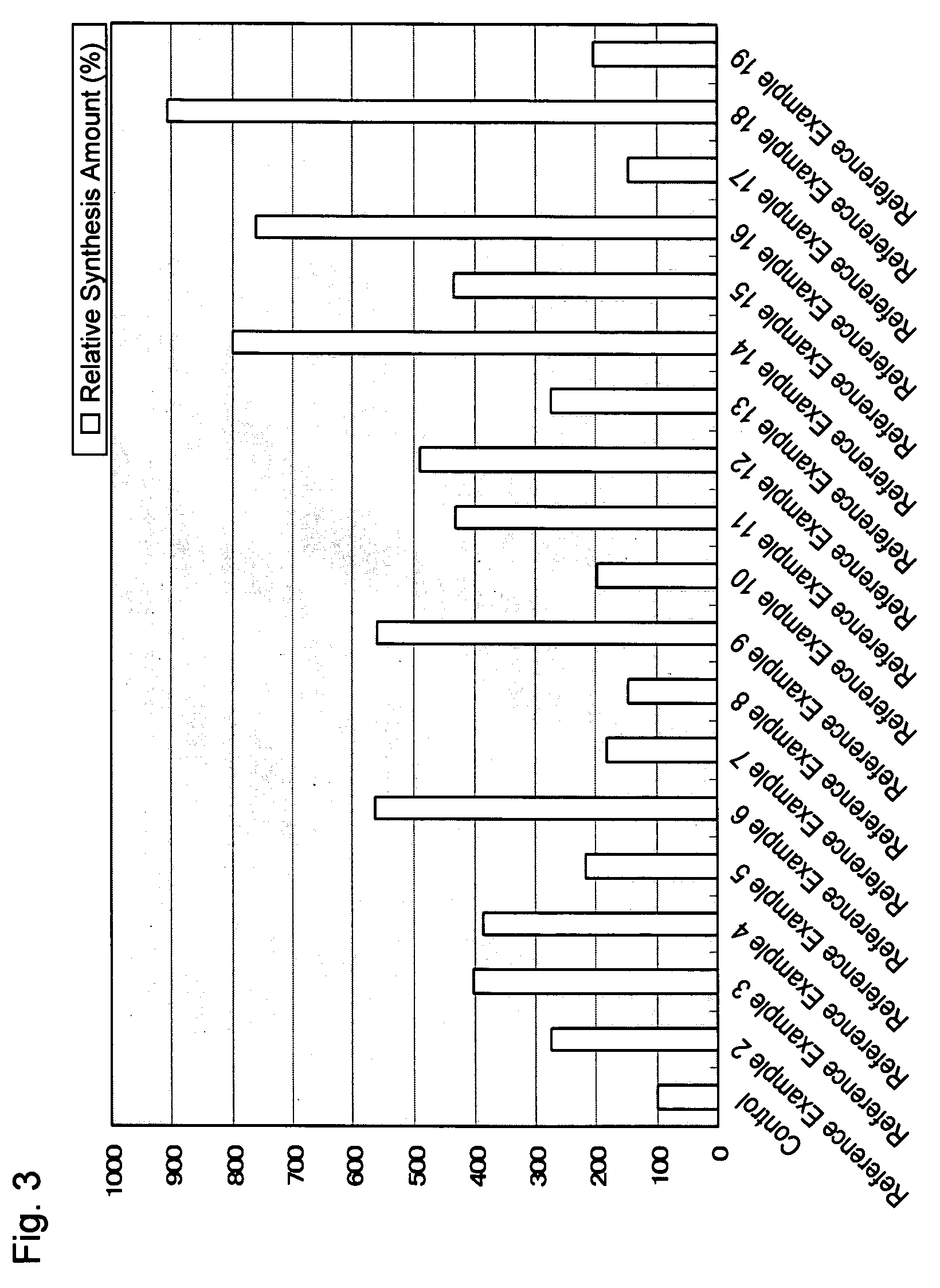DNA fragment to promote translation reaction and method for cell-free protein synthesis system using the same
a technology of cell-free protein and translation reaction, which is applied in the field of dna fragment to promote translation reaction and cell-free protein synthesis system using the same, can solve the problems of reducing transcription efficiency, easy expression, and high cost of cap analogs, so as to facilitate the cloning of a desired gene and improve the effect of translation efficiency
- Summary
- Abstract
- Description
- Claims
- Application Information
AI Technical Summary
Benefits of technology
Problems solved by technology
Method used
Image
Examples
reference example 1
Construction of vector pTNT-Luc
[0208] Using 5 ng of pGEM-Luc Vector (manufactured by Promega Corporation) having a structural gene encoding luciferase as a template, and a primer having a base sequence represented by SEQ ID No. 12 of the sequence listing (LucT7-F3-Kpn) and a primer having a base sequence represented by SEQ ID No. 13 of the sequence listing (Luc T7-R4-Kpn) and KOD plus (manufactured by TOYOBO Co., Ltd.), denaturing the template at 96° C. for 2 minutes and then 30 cycles (each cycle includes 96° C. 15 seconds, 50° C. 30 seconds and 68° C. 120 seconds) of polymerase chain reaction (PCR) was conducted to amplify the open reading frame (ORF) of the structural gene. The PCR product was purified by ethanol precipitation and then digested with KpnI. Separately from this, pTNT Vector (manufactured by Promega Corporation) was digested with KpnI. These reaction solutions were separated by agarose gel electrophoresis and then purified by using Gen Elute Gel Purification Kit (m...
reference example 2
Production of Template DNA (Vector pFib-Luc)
[0209] Using the plasmid vector pTNT-Luc produced in Reference Example 1 as a template, and a primer having a base sequence represented by SEQ ID No. 15 of the sequence listing (T7p Rv) and a primer having a base sequence represented by SEQ ID No. 16 of the sequence listing (Luc-ATG), 30 cycles (each cycle including 96° C. 15 seconds, 50° C. 30 seconds, 68° C. 5 minutes) of PCR was conducted. After completion of the reaction, the PCR product was separated by electrophoresis, and purified using Gen Elute Gel Purification Kit (manufactured by SIGMA Corporation), and the resultant product was used for ligation reaction. In this manner, a plasmid vector in which SP6 promoter sequence, 5′-β globin leader sequence and multi-cloning site on the upstream side of 5′ of structural gene encoding luciferase are deleted from the plasmid vector pTNT-Luc was obtained for examining the effect of insertion of 5′UTR.
[0210] A sense strand and an anti-sense...
reference example 3
Production of Template DNA (Vector pSer-Luc)
[0211] In the same manner as Reference Example 2 except that 5′UTR of sericin gene of silk worm having a base sequence represented by SEQ ID No. 2 of the sequence listing was used, a vector (template DNA) in which one 5′UTR of sericin gene of silk worm having a base sequence represented by SEQ ID No. 2 of the sequence listing was incorporated in forward direction (5′→3′) between the T7 promoter sequence and the structural gene was produced. The obtained template DNA was named “pSer-Luc”.
PUM
| Property | Measurement | Unit |
|---|---|---|
| temperature | aaaaa | aaaaa |
| temperature | aaaaa | aaaaa |
| temperature | aaaaa | aaaaa |
Abstract
Description
Claims
Application Information
 Login to View More
Login to View More - R&D
- Intellectual Property
- Life Sciences
- Materials
- Tech Scout
- Unparalleled Data Quality
- Higher Quality Content
- 60% Fewer Hallucinations
Browse by: Latest US Patents, China's latest patents, Technical Efficacy Thesaurus, Application Domain, Technology Topic, Popular Technical Reports.
© 2025 PatSnap. All rights reserved.Legal|Privacy policy|Modern Slavery Act Transparency Statement|Sitemap|About US| Contact US: help@patsnap.com



